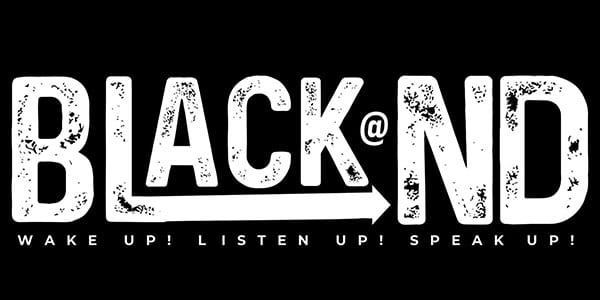Ten Years Hence 2021 – Fake News, Real Costs: How Disinformation and Deep Fakes Impact Business
Subscribe to the ThinkND podcast on Apple, Spotify, or Google.
Featured Speakers:
- James S. O’Rourke, Teaching Professor of Management, University of Notre Dame
- Matthew F. Ferraro, Counsel, Wilmer Cutler Pickering Hale and Dorr, LLP, Washington, D.C.
In the wake of the Capitol riot and Russian interference in the 2016 U.S. presidential election, many of us are aware of the threat that disinformation can pose to democracy. Less explored but equally troubling is the threat that it can pose to the private sector, a topic which Matthew Ferraro, Counsel at Wilmer Hale LLP, spoke to students, alumni, and other members of the Notre Dame community about in the first lecture of 2021’s Ten Years Hence series.
Ferraro, whose national security background includes past service as a U.S. intelligence officer, warned that we are at a seminal moment for gauging disinformation’s effect on our society and developing responses to it. Technology for producing “deep fakes,” images or videos spreading disinformation made to look as though they are real, is improving by the day, and within the next two years the human eye will no longer be able to distinguish what’s authentic from what’s inauthentic. The threat deep fakes pose is especially harmful to women, hundreds of thousands of whom have unknowingly had their images used to produce non-consensual pornography.
Through deep fakes and other means, disinformation attacks on business are increasing. Whether they come from trolls looking to sow chaos, market manipulators aiming to make a fast payday, or foreign governments attempting to boost “national champion” companies in a given industry, misinformation attacks in the private sector are growing in both size and complexity.
Fortunately, prepared businesses will have a policy toolkit to fight back. Conducting social listening will allow a company to monitor how it is perceived online and be able to detect early any brewing campaigns to harm them using false information. Corporations will also find social media companies more willing to work with them on combating disinformation than at any point previously. The real harm that disinformation has caused during the COVID-19 pandemic and in the incitement of the Capitol riot has woken the tech industry up to the dangers disinformation poses, and it is now taking unprecedented steps to ensure it no longer goes unchecked.
In addition, businesses will find that existing legal and regulatory tools can be of great use in the fight against disinformation. SEC fraud claims can stop market manipulators in their tracks. And in the course of conducting their campaigns, malicious misinformation-spreading actors will often appropriate copyrighted images and brand assets belonging to companies, opening themselves up to legal litigation.
On a more general level, Ferraro stressed that the best protection against a growing disinformation threat is an informed citizenry. Individuals should practice what he called “good information hygiene.” This means refraining from sharing or posting information whose source is suspect. It also means interrogating one’s sources of information, looking for corroboration where possible and, most importantly, paying for news, as quality journalism costs money to produce. With the right precautionary steps and proactive defense strategy, individuals and businesses will be able to meet the growing disinformation threat and ensure that in the end, the truth will in fact prevail.
- “The dark and deeply disturbing events of January 6th show that disinformation can have real consequences. It can poison minds and lead to delusions and violence.” (Matthew Ferraro 9:22)
- Within two years, the human eye will be unable to distinguish “deep fake” images and video from authentic images. (12:15)
- A growing consequence of deep fakes will be the so-called “liar’s dividend,” when people who commit real wrongdoing are able cast doubt on their deeds by claiming the authenticity of evidence is questionable. (15:03)
- “Eighty-eight percent of investors consider disinformation attacks on corporations a serious issue.” (Matthew Ferraro 18:30)
- $78 billion each year is lost by firms due to disinformation (18:55).
- “About 70 countries or more have disinformation units. These are specific military units that push disinformation. It’s only a small step for them to push disinformation not only about political and military actors, but also businesses.” (Matthew Ferraro 30:48)
- “It’s really important for brands to understand how they’re perceived online so they can get advanced warning of any efforts to spread lies about them.” (Matthew Ferraro 33:25)
- Companies should prepare disinformation resilience plans the same way they do cybersecurity resilience plans (39:25).
- “Be skeptical of the information you receive, but don’t be so cynical as to believe it’s all made up.” (Matthew Ferraro 45:23)
- A key way to combat disinformation is to subscribe to newspapers. Good journalism costs money, and just because we get news for free does not mean we should. (46:10)
Related Content
How Cities Speak To Us
Professor Emily Talen joins the School of Architecture to share her work at The Urbanism Lab and its focal point at the University of Chicago for the study of the built...
View EventThe Black National Anthem & Parent’s Signing Off On Children Reading Black Books
In this week’s episode, Isaiah and Tykiera talk about some tweets about Black people that took Twitter by storm. They also talk about The Black National Anthem, Lift Every Voice...
watch videoTrusted AI Needs Trusted Data
In the buzz around AI, let’s not ignore the role of data for developing AI we can trust, says one Notre Dame computational scientist. Two years ago, Notre Dame launched the...
Read Article


